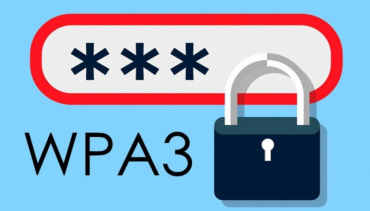
On June 25, 2018, the Wi-Fi Alliance
officially introduced the
Wi-Fi CERTIFIED WPA3 certification program . This is the first update of Wi-Fi security protocols in the last 14 years.
According to the alliance, WPA3 (Wi-Fi Protected Access 3) "adds new features to simplify Wi-Fi security, provide more reliable authentication, increase cryptographic security for highly sensitive data markets and ensure resiliency of critical networks." In all WPA3 networks:
- Uses latest security techniques.
- Obsolete protocols are prohibited.
- Mandatory function to protect control frames from PMF (Protected Management Frames) compromise
Since Wi-Fi networks have different usage and security needs, WPA3, like WPA2, offers two standard profiles for personal and corporate networks: WPA3-Personal and WPA3-Enterprise.
WPA3-Personal users get stronger password authentication and brute-force protection, even in cases when they choose a password that is too short or simple. This is implemented by replacing the old Pre-shared Key (PSK) protocol with the
Simultaneous Authentication of Equals (SAE) protocol from Dan Perkins. SAE refers to protocols such as
PAKE (password-authenticated key agreement): an interactive method where two or more parties establish cryptographic keys based on knowledge of one or more parties to a password.
The key feature of PAKE - a person in the middle
cannot get enough information to conduct a full-fledged "offline" brute force in passive mode. He necessarily requires interaction with the parties to verify each option. This means that even with weak passwords much better security is provided than before.
WPA3-Personal is more focused on ease of use. Users can still select arbitrary passwords.
WPA3-Enterprise provides much higher security requirements and now allows for the use of highly secure security protocols for sensitive data networks. Cryptographic protocols using a minimum of 192-bit keys and the following cryptographic tools for data protection are offered:
- Authenticated encryption : 256-bit Galois / Counter Mode Protocol (GCMP-256)
- Key generation and confirmation : 384-bit Hashed Message Authentication Mode (HMAC) with Secure Hash Algorithm (HMAC-SHA384) hashing
- Key exchange and authentication : Elliptic Curve Diffie-Hellman (ECDH) protocol exchange and Elliptic Curve Digital Signature Algorithm (ECDSA) digital signature on a 384-bit elliptic curve
- Reliable traffic protection management : 256-bit Broadcast / Multicast Integrity Protocol Galois Message Authentication Code (BIP-GMAC-256)
It is assumed that when selecting the 192-bit mode, all the listed tools will be used, which guarantees the correct combination of protocols as a basic security platform within the WPA3 network.
WPA3 retains backward compatibility with WPA2 devices and is currently an optional additional certification for Wi-Fi CERTIFIED devices.
WPA3 is based on the
Simultaneous Authentication of Equals (SAE) cryptographic protocol from Dan Harkins. This specialist is also the author of the
infamous Dragonfly protocol
(RFC 7664) . It has to be said that the RFC 7664 approval procedure in the IETF was
accompanied by heated debates . The CFRG cryptostandard working group chair, which claimed Dragonfly, Kevin Igoe,
is allegedly
an NSA employee . As a result, after all, in a global sense, it is impossible to speak with all confidence about the cryptographic strength and overall reliability of the SAE protocol and the WPA3 standard as a whole.
The Wi-Fi Alliance expects that devices with WPA3 support will be available on the market in 2019, along with devices that support a new, faster version of Wi-Fi itself —
802.11ax . After that, WPA3 support can be a prerequisite for certification of any Wi-Fi device.
